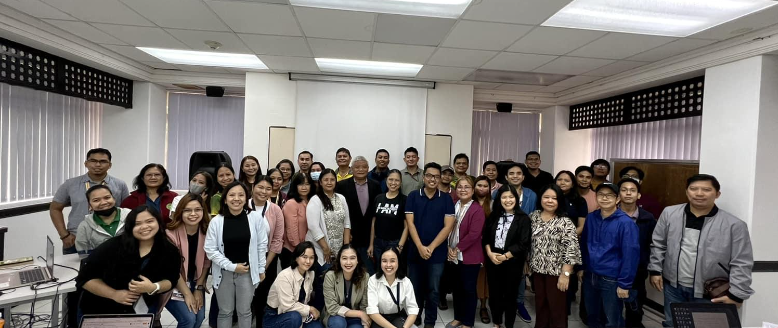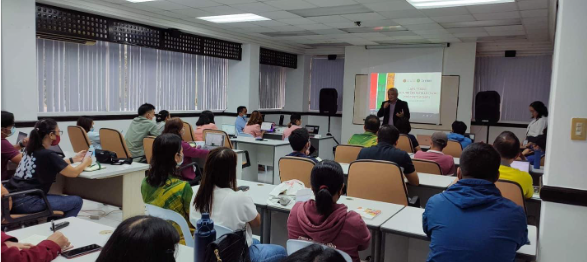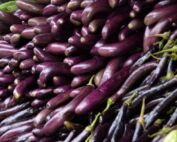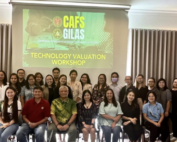
CAFS holds lecture on Intellectual Property
The College of Agriculture and Food Science (CAFS) in partnership with the UPLB Technology Transfer and Business Development Office (TTBDO), conducted a lecture on Intellectual Property (IP) last January 20 at the TTBDO Conference Room. This is in line with the technology commercialization efforts of CAFS and part of the series titled “Generation of Innovative Landscape for Agriventure Solutions” (GILAS).
In his opening remarks, Dean Elpidio M. Agbisit, Jr. stated that CAFS has been producing a lot of technologies but still receives comments about not being felt by the farmers. He emphasized that CAFS’ presence will be more impactful if it commercializes the technologies to promote farmers’ utilization. He ended his message by enjoining the participants to learn, apply what they have learned, and share it to friends and colleagues.
Prior to the lecture, the host from TTBDO emphasized that as a leading university in research and development, UPLB has produced several technologies that would benefit various stakeholders and sectors. Therefore, it is important to protect our intellectual property before we start commercializing.
Engr. Ida Allen P. Lopez of UPLB TTBDO, served as the first speaker. She discussed the topic, “Copyright and Related Rights”. According to Engr. Lopez, copyright is a legal protection extended to the owner of the rights in an original work. It covers literary and artistic works, scholarly and scientific work, and derivative works. She also presented some copyright symbols and copyright examples.
 Engr. Lopez also explained that there are types of rights protected by copyright law. These include:
Engr. Lopez also explained that there are types of rights protected by copyright law. These include:
- Economic Rights which consist of Right of Reproduction; Right of Public Performance, Broadcasting and Communication, and Making Available to the Public; Right of Translation and Adaptation; and
- Moral Rights which are composed of Right of Attribution and Right of Integrity.
Finally, to give the participants an idea on how to acquire a copyright, Engr. Lopez presented the process of applying for it.
The second lecture was on Trademark, Geographical Indications, and Plant Variety Protection delivered by Ms. Arianne Mae. L. Magistrado, a university extension associate at UPLB TTBDO. According to her trademark is a legal protection to “mark or brand”. The “mark” being referred to by Ms. Magistrado is any visible sign capable of distinguishing the goods or services of an enterprise from that of another. Furthermore, a trademark has many purposes. It serves as an identifier, differentiator, advertising device, and quality/trust indicator. It also hinders unfair competition.
Geographical indication, as Ms. Magistrado defined it, is a sign used to distinguish goods or services that have geographical origin and possess a given quality, reputation, or other characteristic that is attributed to that origin. It serves as a geographic differentiator. It can contribute to development in rural areas. It can also be a means to preserve cultural traditions. 
Lastly, in the second lecture, Ms. Magistrado discussed the reasons for Plant Variety Protection (PVP). Ms. Magistrado concluded her lecture by discussing the basis for having PVP, the process of obtaining it, and its importance in acknowledging the achievement of breeders of new plant varieties, as well as the scope of a breeder’s right.
The third topic centered on inventions. This included patents, trade secrets, utility models, and industrial design. Engr. Aina Angeline R. Buan, an intellectual property officer at UPLB TTBDO, served as resource speaker. She explained that patents are a set of exclusive rights granted by a sovereign state to an inventor or assignee for a limited period of time in exchange for public disclosure of the invention. She also presented the criteria for patentability, purpose of a patent, and the process of obtaining one. She added that a utility model is the same as a patent but the criteria for qualification is downgraded to novel and is industrially applicable.
Engr. Buan continued by explaining that a trade secret is a plan, process, tool, mechanism, or compound that is known only to its owner and key employees. She finished by defining industrial design as an intellectual property right that protects the appearance of an article, which results from features such as the lines, colors, shape, or ornamentation.
After all the presentations, participants were assigned in groups during the breakout session. Each group had to identify a technology that exists in their unit, discuss the appropriate intellectual property protection that would best fit the technology, and present the results at the plenary for comments.
The one-day IP lecture concluded with the closing activities led by Dr. Lilia M. Fernando-Corpuz, CAFS associate dean for research and extension and lead of the CAFS GILAS. In her closing remarks, Dr. Fernando-Corpuz enjoined the participants to file an Invention Disclosure, and encouraged them to aim for the Invention Disclosure Award from the UP System. (IMGesmundo)




